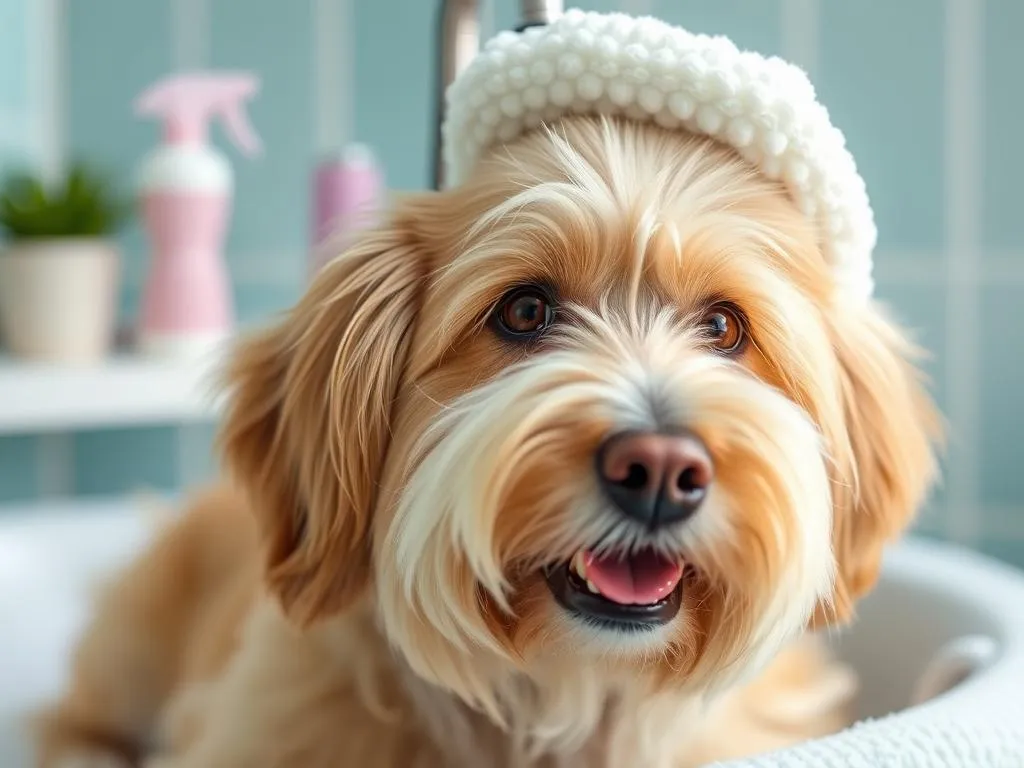
Creating a spa day for your dog can be a rewarding experience for both of you. Not only does it enhance your dog’s overall health and well-being, but it also strengthens the bond you share. A DIY spa day at home is an opportunity to pamper your furry friend, providing them with relaxation and care that they might not get otherwise. In this guide, we will explore everything you need to know about how to give your dog a spa day at home, covering their needs, setting up the environment, the spa process, and enhancing the experience.
Understanding Your Dog’s Needs
Assessing Your Dog’s Health
Before diving into the spa day preparations, it’s essential to assess your dog’s health. Many dogs can benefit significantly from a spa day, especially if they exhibit signs of discomfort or stress. Look for indicators such as:
- Dry, itchy skin
- Excessive shedding
- Signs of anxiety (e.g., whining, pacing)
- Dull coat
- Unkempt nails
If your dog has specific conditions, like skin issues or anxiety, these may require special attention during their spa day. Consult with your veterinarian if you have any concerns about your dog’s health or if they’re undergoing treatment for any conditions.
Knowing Your Dog’s Preferences
Every dog is unique, and understanding their likes and dislikes is crucial for a successful spa day. Spend some time observing your dog’s behavior when they are groomed or bathed. Note what they seem to enjoy, whether it’s particular touches, types of brushes, or even specific scents. This knowledge will help you create a more enjoyable experience tailored to your dog’s preferences.
Setting Up the Spa Environment
Creating a Calm Atmosphere
A quiet, calm environment is essential to help your dog relax during their spa day. Choose a space in your home that is free from distractions and noise. You can enhance this atmosphere with:
- Calming scents: Consider using dog-safe essential oils like lavender or chamomile. A diffuser can gently disperse these scents throughout the area.
- Soft sounds: Play soothing music or nature sounds to create a peaceful backdrop. There are even playlists designed specifically for calming dogs.
Essential Spa Supplies
Having the right supplies on hand is key to a successful spa day. Here’s a list of essential items you’ll need:
- Towels: For drying after baths.
- Grooming tools: Brushes, combs, and de-shedding tools appropriate for your dog’s coat type.
- Dog-safe shampoo: Choose a gentle, hypoallergenic product.
- Conditioner: Look for dog-friendly conditioners to hydrate the coat.
- Nail clippers or grinders: Essential for nail care.
- Massage oil: Ensure it’s safe for dogs if you plan to incorporate massages.
Make sure all products are dog-safe, as some ingredients in human products can be harmful to pets.
The Spa Day Process
Bathing Your Dog
Bathing is a crucial part of a spa day. Here’s how to do it effectively:
- Choose the right shampoo: Select a dog shampoo that suits your dog’s coat type and skin sensitivity. Avoid human shampoos as they can irritate a dog’s skin.
- Prepare the bathing area: Use a bathtub, shower, or even a kiddie pool if your dog prefers it. Make sure the water is lukewarm.
- Wet the coat thoroughly: Use a handheld showerhead or cups to wet your dog’s coat, avoiding their eyes and ears.
- Apply shampoo: Lather the shampoo gently into your dog’s coat, working it from neck to tail.
- Rinse thoroughly: Ensure all shampoo is washed out to prevent skin irritation.
- Drying: You can either air dry your dog in a cozy area or use towels to pat them dry. If using a blow dryer, set it on a low, cool setting to avoid burns.
Grooming and Brushing
Regular grooming is vital for maintaining your dog’s health and coat condition. Here are some tips:
- Frequency: Depending on their coat type, some dogs may need daily brushing, while others only need it weekly.
- Techniques: Use the right brush for your dog’s coat. For example, slicker brushes work well for long-haired breeds, while bristle brushes are better for short-haired dogs.
- Check for skin issues: While grooming, look for any signs of skin problems, such as lumps, bumps, or irritations. If you find something unusual, consult your veterinarian.
Nail Trimming
Nail care is crucial for your dog’s health. Long nails can lead to discomfort and mobility issues. Follow these steps for safe nail trimming:
- Choose the right tools: Use dog-specific nail clippers or grinders.
- Get your dog comfortable: Hold their paw gently and let them sniff the tools.
- Trim carefully: Avoid cutting into the quick (the pink area). If your dog has dark nails and you cannot see the quick, trim small amounts at a time.
- Reward your dog: After each nail, give your dog praise or a treat for good behavior.
Massage and Relaxation Techniques
Massage can significantly enhance your dog’s relaxation. Here’s how to do it:
- Benefits: Massage helps reduce anxiety, improve circulation, and strengthen your bond with your dog.
- Techniques: Start with gentle strokes along the back and sides, using your fingertips in circular motions. Pay attention to areas like the neck, shoulders, and base of the tail, which can hold tension.
- Recognizing enjoyment: Watch for signs of relaxation, such as leaning into your touch, closing their eyes, or even soft panting.
Enhancing the Experience
Incorporating Treats
Healthy treats can make your dog’s spa day even more enjoyable. Here are some ideas:
- Store-bought healthy treats: Look for options with natural ingredients and no fillers.
- Homemade dog treats: Consider making your own! Simple recipes using peanut butter, pumpkin, and oats can be both fun and nutritious.
Adding Fun Extras
To enhance the spa experience, think about including some fun extras:
- Games: Engage your dog with their favorite toys or a game of fetch to keep the mood light and enjoyable.
- Aromatherapy: In addition to calming scents, you can use pet-safe essential oils in a diffuser to create a relaxing ambiance.
Post-Spa Day Care
Monitoring Your Dog’s Behavior
After a relaxing spa day, it’s essential to monitor your dog’s behavior. Look for:
- Signs of relaxation: A calm demeanor, stretching, or even napping indicates a successful spa day.
- Signs of distress: If your dog seems anxious or restless, it might be a sign that they didn’t enjoy a particular aspect of the spa day.
Establishing a Routine
Regular spa days can provide ongoing benefits for your dog. Consider creating a schedule that works for both of you. Here are some tips:
- Frequency: Depending on your dog’s needs, you might schedule a spa day once a month or every few weeks.
- Routine: Consistency helps your dog know what to expect, which can reduce anxiety and enhance enjoyment.
Frequently Asked Questions
How often should I give my dog a spa day?
The frequency of spa days can vary based on your dog’s needs, coat type, and lifestyle. Generally, a spa day every month or every few weeks is beneficial for most dogs.
Can I use human products on my dog?
No, it’s best to avoid using human products on dogs as they can lead to skin irritation or allergic reactions. Always opt for dog-specific grooming products.
What should I do if my dog doesn’t enjoy spa treatments?
Respect your dog’s comfort level. If they seem anxious, try to identify which part of the spa day they dislike. You may need to adjust your approach, go slower, or skip certain treatments.
Conclusion
Giving your dog a spa day at home can be a delightful experience that promotes their health and strengthens your bond. By understanding your dog’s needs, creating a calming environment, and following a thoughtful spa day process, you can ensure they feel loved and pampered. Don’t forget to enhance the experience with treats and fun activities, and monitor your dog’s behavior post-spa day to help establish a routine that keeps them looking and feeling their best.
Enjoy the process and cherish the moments spent together as you embark on this pampering journey for your furry friend!









